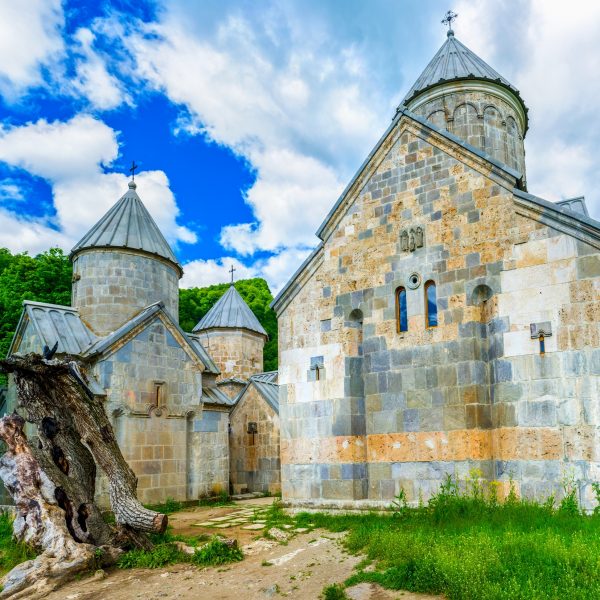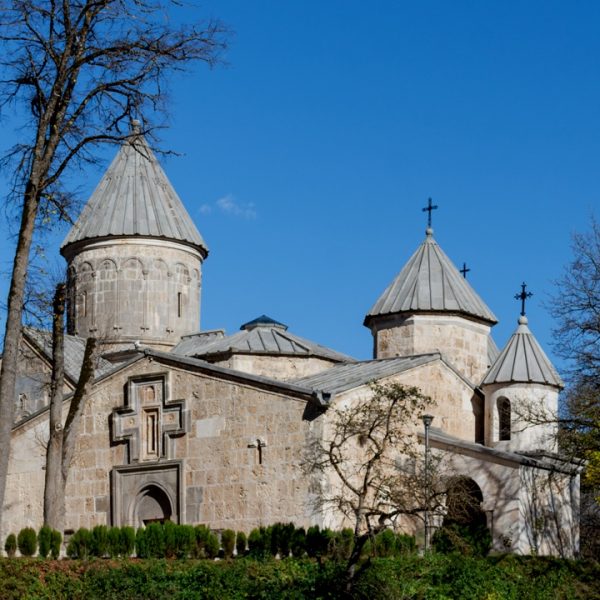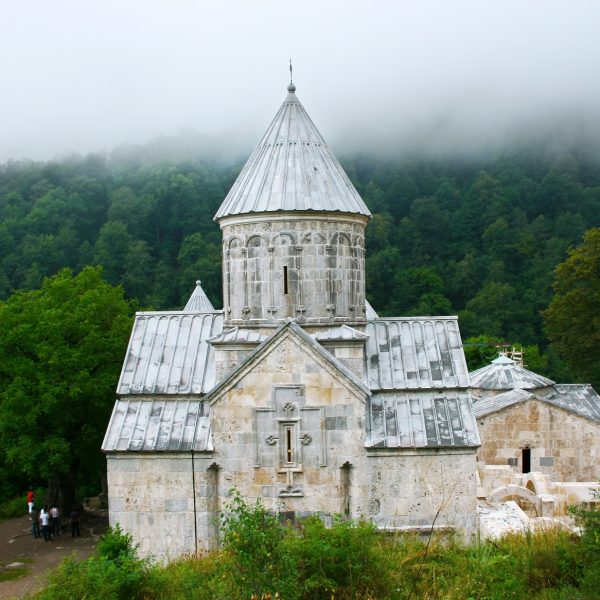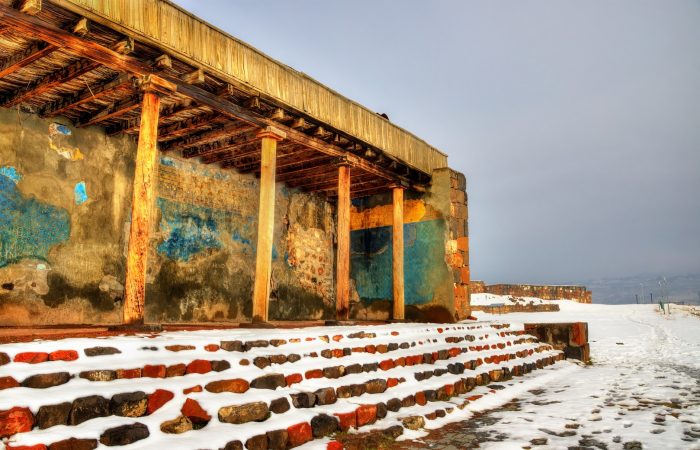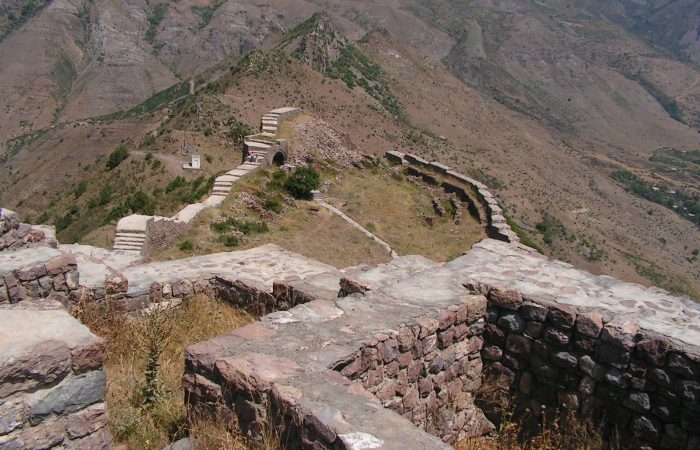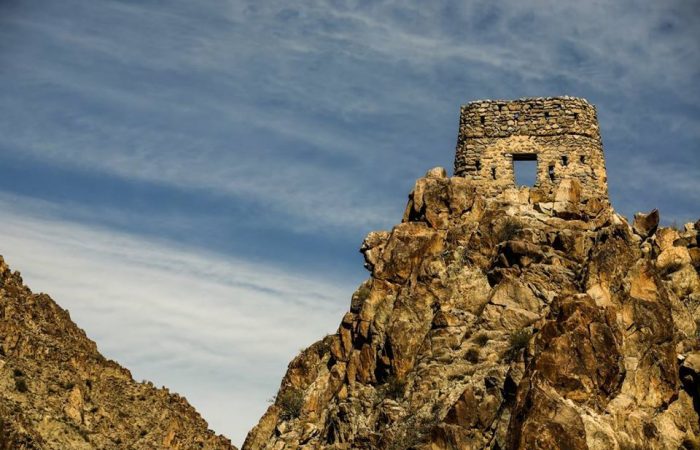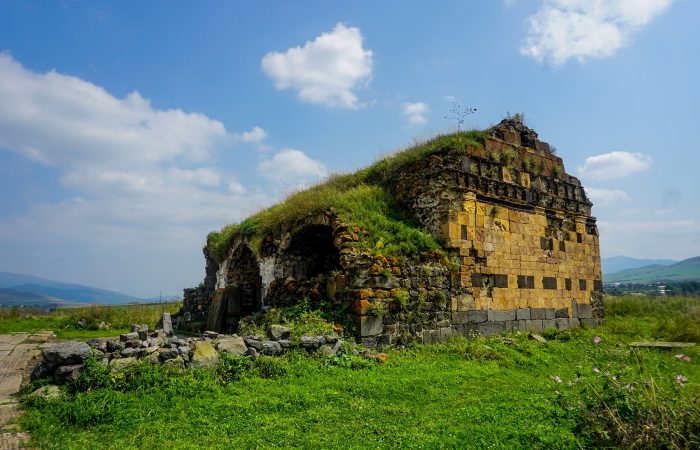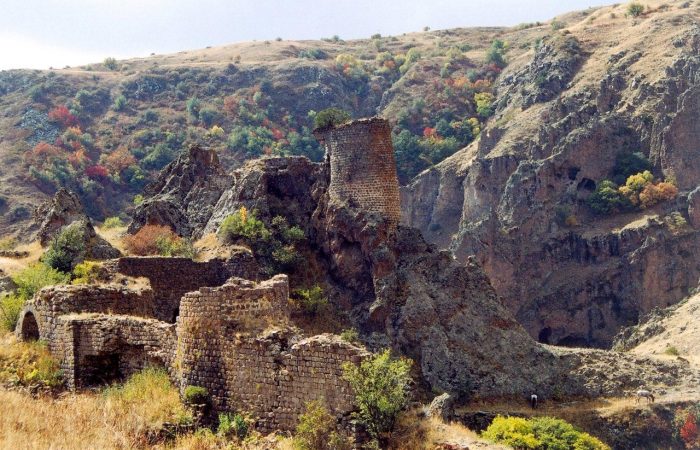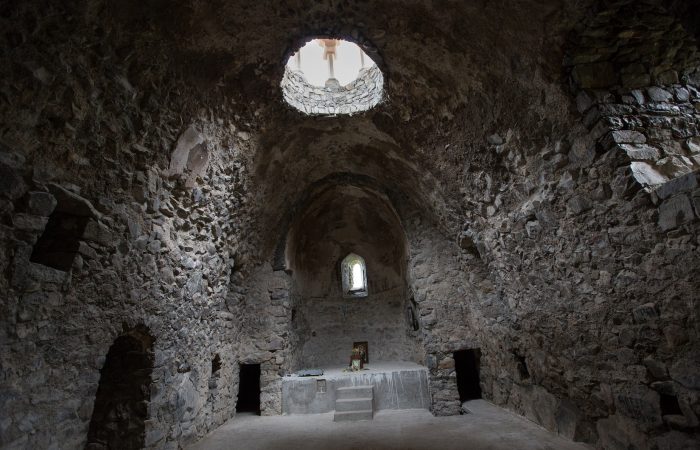Haghartsin Monastery: General
Located 18 kilometers from Dilijan, Haghartsin monastery belongs to those architectural pieces that were built in the 12th-13th centuries. The monastery was built far from the roads and noisy city life, in a safe place enclosed in the remarkable Armenian nature. On the southern side of the monastery River Haghartsin flows, while on the eastern side the Great Spring.
It is believed that the monastery’s name has the roots “hagh” meaning game and “artsiv” meaning an eagle. Going back to the origins, it is said at the monastery’s dedication an eagle was soaring above its dome as if playing around it, and there came the name of the monastery. Since there is no any other reliable explanation regarding the monastery’s name, this one is what you should stick to. But to believe it or not? That is the question.
Haghartsin Monastery: Architecture
The main church type being built in the 5th-7th centuries were the dome churches, in which the dome was based on four columns. The monastery used to include several churches with one of them being the main one and the rest subsidiary. In case of Haghartsin monastery, other than churches there are the gavit, the refectory, the scriptorium, the belfry and the khatchkars.
Of special interest is the refectory. It’s one of the most popular buildings in the monastery. The ceiling of the refectory’s large hall is held by crossing arches. Nevertheless, the arches are built so skillfully that as you look at them you won’t feel the heaviness of the ceiling.
Haghartsin Monastery: Flourishing
Haghartsin monastery started flourishing already in the first half of the 13th century, more precisely in the 1230s, when the monastery’s spiritual leader was Vardapet Khachatur Taronetsi. It’s then that the monastery’s religious community expanded. In 1254 together with his brother Barsegh, Vardapet Khachatur Taronetsi built the gavit of Saint Grigor.
In 1256 Vardapet Hovhannes Armanetsi was appointed the monastery’s new spiritual leader. In the same year he started and completed the construction of a refectory for the religious community.
Haghartsin Monastery: Churches
The monastery of Haghartsin includes three churches. They are Saint Atsvatsatsin (Holy Mother) Church, which is the monastery’s main church, Saint Grigor church and Saint Stepanos Church.
Saint Astvatsatsin Church
Saint Astvatsatsin Church is a rather tall building with the layout appearing as a cross. It was built in 1071 in the style of Armenian domed churches, rises with four arches and has no columns. Rebuilt in 1281 the church is well-preserved comparing with the other two.
Saint Grigor Church
Saint Grigor Church was built in the 10th-11th centuries, and the gavit in the 13th century.
Saint Stepanos Church
Saint Stepanos Church was built in 1244 and can be found to the right of Saint Astvatsatsin church. It’s basically the small-size variant of the Holy Mother Church.
Haghartsin Monastery: Refectory
The refectory of Haghartsin Monastery was built in 1248. The architect was Minas. There are two domes above, which let light into the refectory and remind of Armenian flues.
The refectory is considered a masterpiece of Armenian classical secular architecture in regard to both its inner arrangement and the roof structure. The roof of the refectory lies on columns, which cause the visitors to surprise and at the same time serve as an evidence of mathematics being at a highest level in medieval Armenia.
Just like in Goshavank, in Haghartsin monastery as well there is a sun dial. The first sun dials appeared in Armenia during the reign of Artashes II, and since then most Armenian monasteries and churches have used them, especially to learn the mass time.
Lastly, a bronze boiler found in Haghartsin and weighing 350 kilograms is one of the most treasured samples of metallurgy. An inscription on the boiler shows it dates back to 1232. It has four handles, which are made in forms of lions the legs of which are ornamented.

